7 October 1778 Wednesday
Piranesi's thinking about what he's going to do at the meeting of the Academy of S. Luca on Sunday.
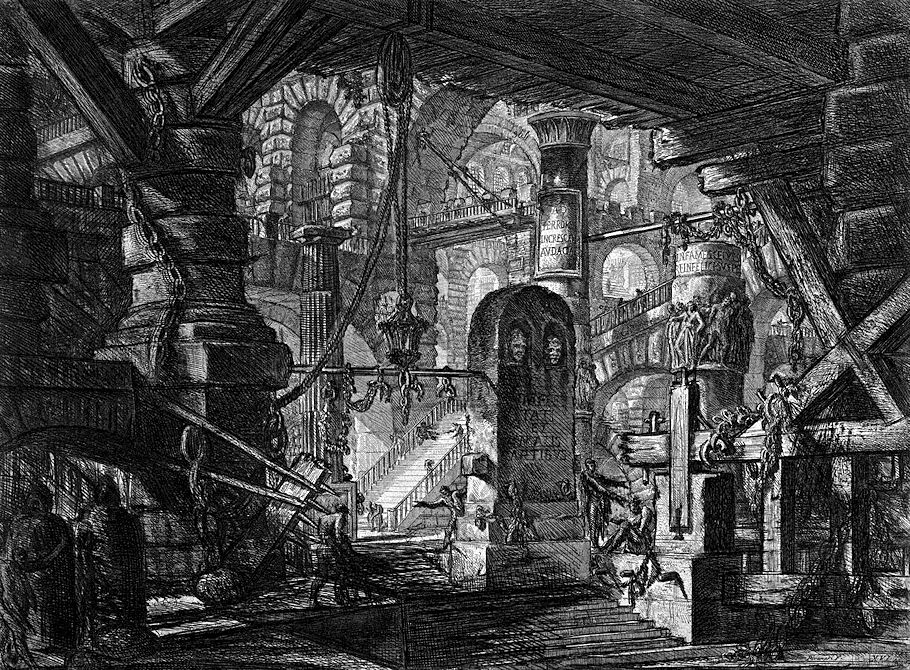
Shortly before midnight, Piranesi woke from an unusual dream. All he can remember is walking through a prison and a prisoner yelled, "I'll never say it again! Please let me out! I promise!" Piranesi got very annoyed and left immediately. On his way out he encountered a guard.
"His sentence is here for eternity."
"What on earth did he do?"
"He was always saying there are no streets in the Campo Marzio."
"Ah, so the punishment does fit the crime."
"Of course, Your Excellency."
48 y.o. Francesco Piranesi 1806
Le Antichità della Magna Grecia Parte III
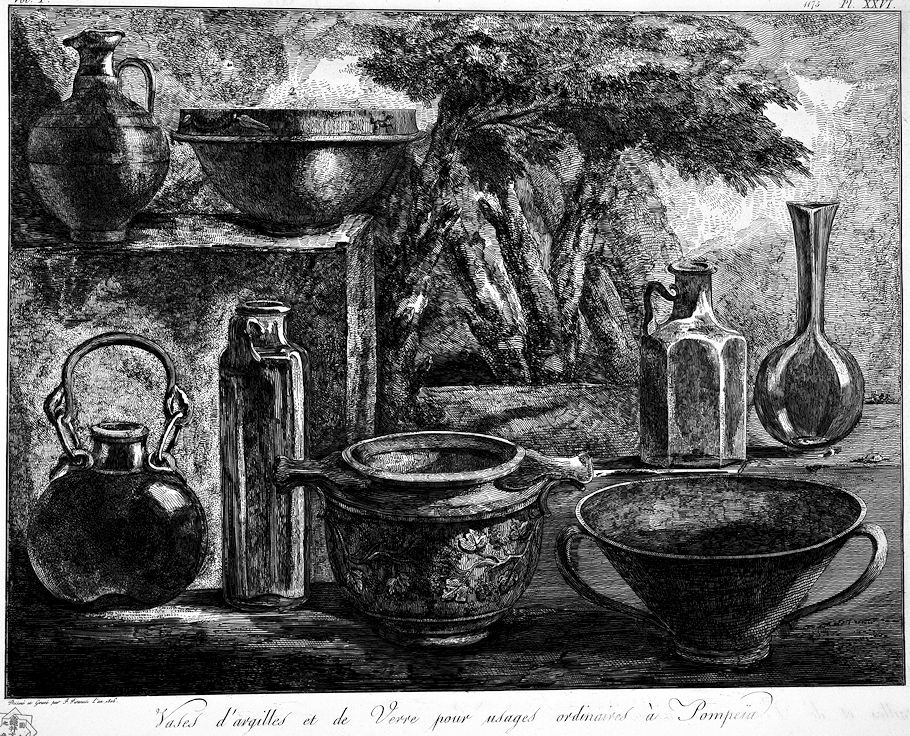
Clay and glass vases for ordinary uses in Pompeii.
Drawn and Engraved by F. Piranesi Year 1806
7 October 1812 Wednesday
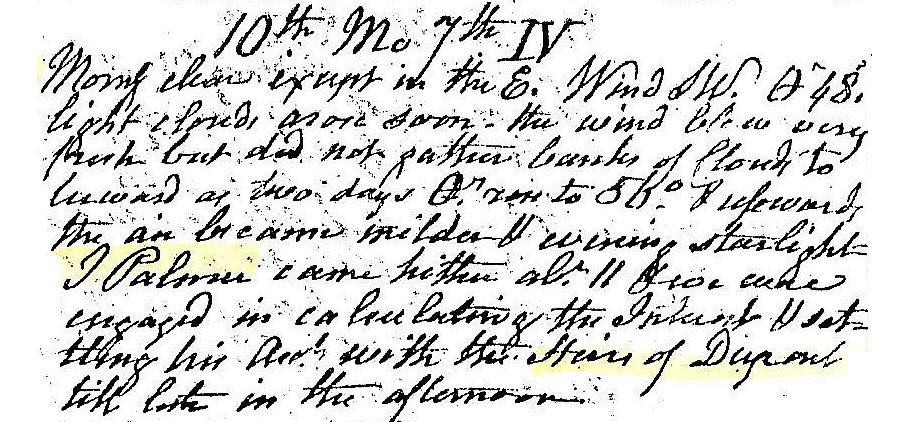
Morning clear except in the E, wind SW, temperature 48°. Light clouds arose soon. The wind blew very fresh, but did not gather banks of clouds to leeward as two days. Temperature rose to 56°. ...forwards the air became milder and evening starlight. T. Palmer came hither about 11 and we came[?] engaged in calculating the interest and settling his accounts with the Heirs of Dupont till late in the afternoon.
7 October 2000
non-Euclidean geometry
Non-Euclidean geometry, that term oft-used but not exactly understood by many of today's non-orthogonally 'inclined' architects and theorists, stems from the many age-old mathematical attempts to disprove one of Euclid's axioms:
"There was in particular one axiom, the axiom of parallels, which they disliked and attempted to eliminate. The axiom states that through a given point one and only one parallel can be drawn with respect to a given line; that is, there is one and only one line that does not ultimately intersect with a given line and yet lies in the same plane." (from H. Reichenbach, The Rise of Scientific Philosophy, 1951.)
With the discovery that light does not travel in a straight line, the notion that parallel lines can then (eventually) intersect seems to disprove Euclid's parallel axiom.
Another aspect of non-Euclidean geometry is that the sum of the angles inside a triangle can add up to more that 180 degrees, but such triangles only truly exist when the area of the triangle is extremely vast, say a triangle created by connecting three galaxies.
Basically, it is still Euclidean geometry that governs what architects on Earth are capable of building.
7 October 2004

Tony D'Aulerio at Your Colour Memory
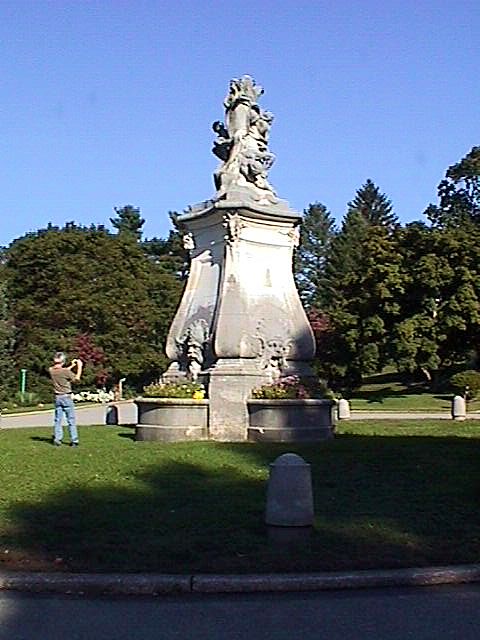
Tony D'Aulerio at the quondam Stotesbury Estate
7 October 2006
Cemeteries
remember when death was celebrated as a spectator sport?
1998.04.27
new insights regarding the Campo Marzio Busti
Proceeding with translating all the Latin labels of the Ichnographia, new ideas regarding the Bustum Hadriani and the Bustum Augustus developed. I haven't compared and contrasted them before, but it appears that Piranesi treats the two Busti as opposites of each other. The development of this notion is as follows:
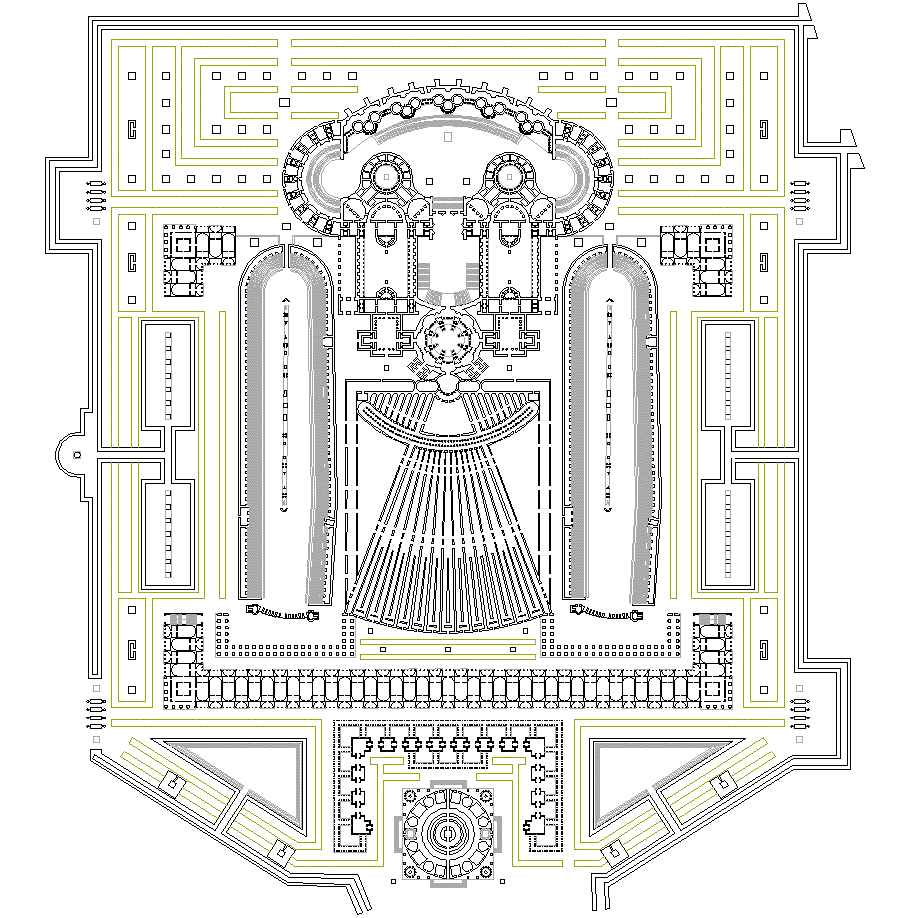
Piranesi's label of the radiating triangular clitoporticus of the Bustum Hadriani translates as a porticus dedicated to the evocation of the gods and the spirits of the Lower World. Of course, such a porticus fits perfectly on the axis of death, and this death axis is also further reinforced by the correct meaning of the Bustum, a place of cremation along with the slab for the burning bodies and the funeral-pyre [all on axis]. Moreover, the design of the clitoporticus directs all focus upon the place of burning, and it is easy to imagine the wailing that would emanate from this place--it is interesting to match the raising of wailing voices from the clitoporticus with the raising of smoke from the cavea bustum. The whole Bustum Hadriani, now more than ever, comes across as exceedingly morbid, and, ironically, it seems that the burning of the dead within the Bustum Hadriani is treated as a spectator sport, especially with the grandstands of the cavae bustum.
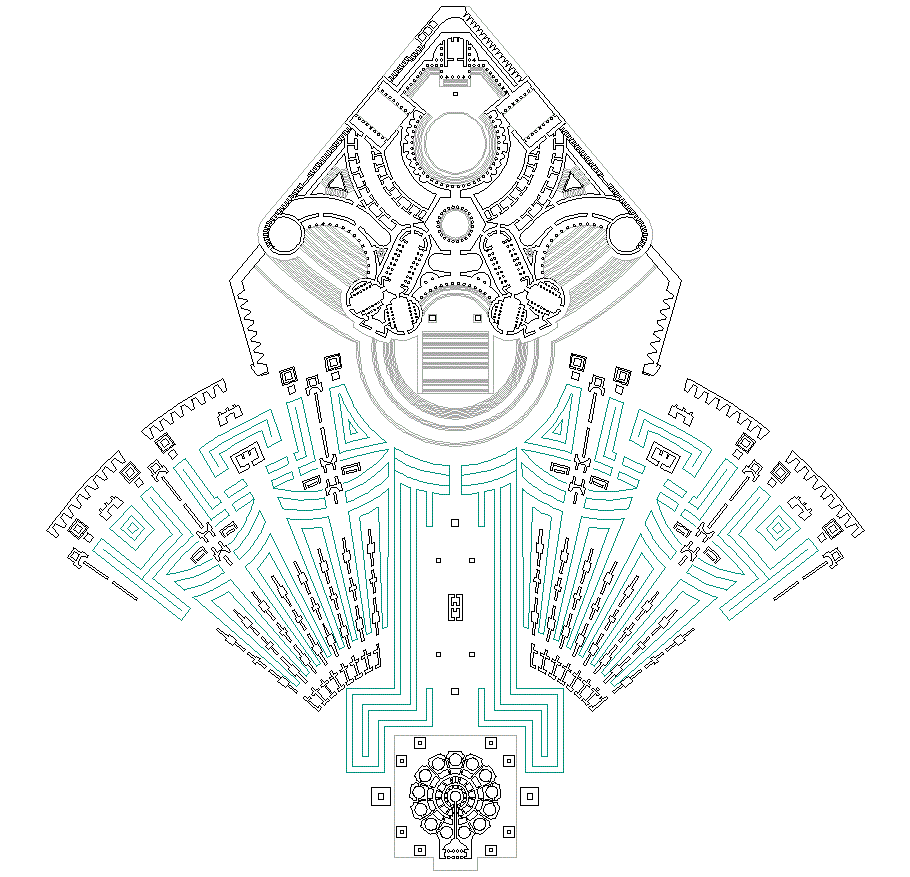
Next, I began to translate the labels of the Bustum Augustii, and here I found the exact opposite wording--the joyful recollection of Augustus. The evocation of joy is certainly the opposite of evoking the spirits of the underworld, and it was this sharp contrast that led me to notice all the other contrasts between the Bustum Hadriani and the Bustum Augustii.
The list of contrasts is as follows:
a. where Hadrian's clitoporticus funnels inward, Augustus' memoriae fans outward.
b. where the Hadrian precinct is square, the Augustan precinct is round.
c. the Hadrian Bustum proper is a "depression," where the Augustan Bustum is "uplifting," raised on a hill.
d. the center of the Bustum Hadriani is fire, and the center of the Bustum Augustii is water.
e. the Bustum Hadriani is surrounded by a canal (moat), and the Bustum Augustii is surrounded by a wall.
f. the Bustum Hadriani, with its circuses, is open to all, where the Bustum Augustii, with its iron gate, is closed.
g. where the Bustum Hadriani has a fair degree of archeological veracity, the Bustum Augustii is full of blatant misplacements.
In simple allegorical terms, the Bustum Augustii represents the "rise" of Rome, and the Bustum Hadriani represents the "fall" of Rome, which is just another inversion derived from a whole set of inversions. The notion of "rise" and "fall," moreover, can be seen in the phallic porticus of the Bustum Augustii versus the arch of Gratian, Valentinian et Theodosius, which represents the last Roman triumph along with the end of the unified empire.
I never expected to make this type of discovery, and this certainly is important because it encompasses the Campo Marzio's two largest complexes, and the two Imperial mausoleums. It is also important because of all Rome's history, i. e., Pagan, Christian, and Imperial, is allegorically represented in the plan. Furthermore, it is clear through the designs of the two busti that Piranesi was very consciously drawing and designing the Ichnographia allegorically with a full knowledge and understanding of Rome's history and its archeology. It is almost as though the design of the Bustum Augustii is Piranesi's own expression of joy in evoking the glories of Augustan and Imperial Rome at its best.
it's like where Rossi got his best cemetery ideas.
7 October 2017
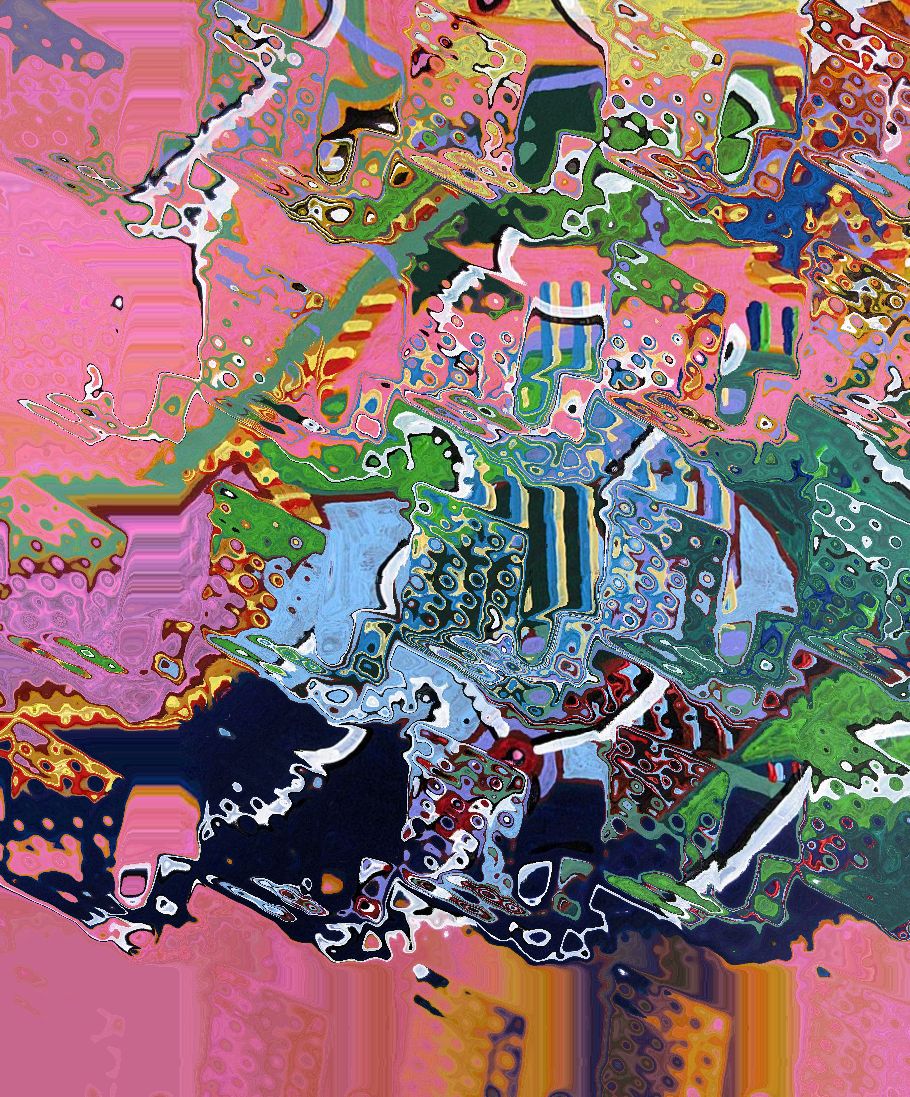
Virtual Painting 474
7 October 2022 Friday
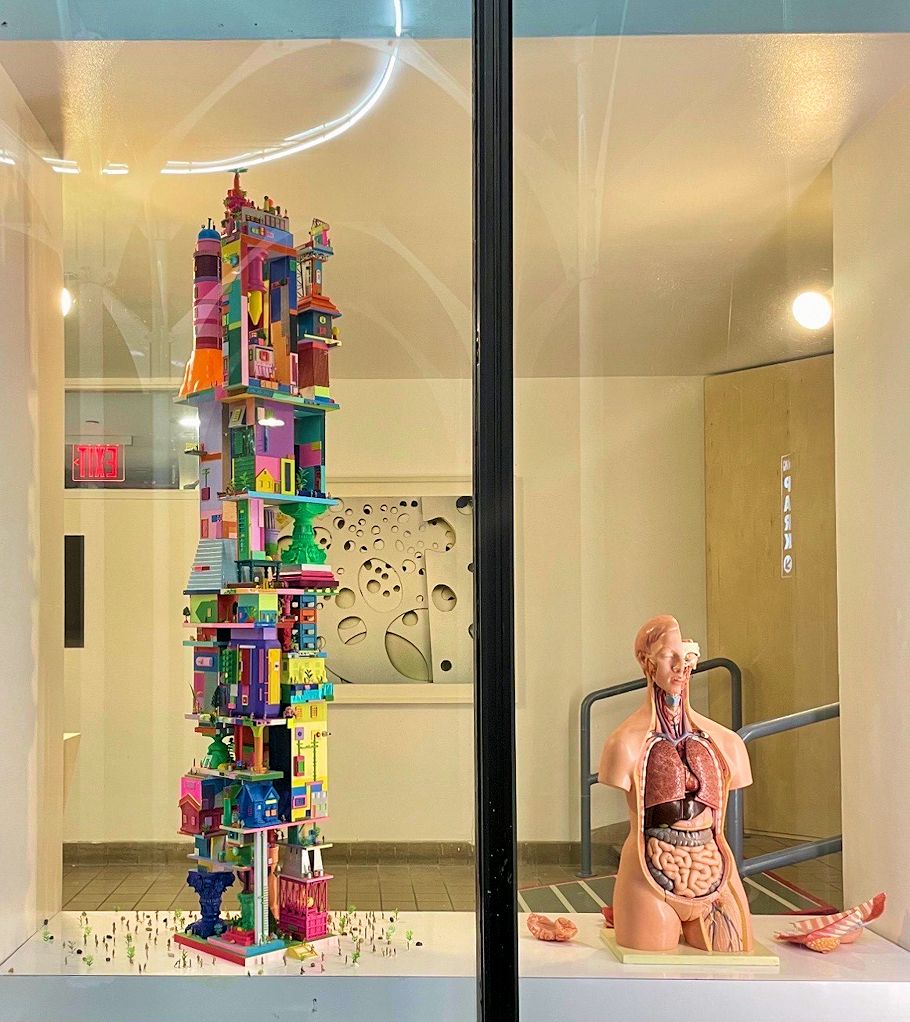
20:59 AK: This is what it looked like. Mine is on the left. Apparently that's Hejduk's anatomical model. And Thomas Demand in the back.
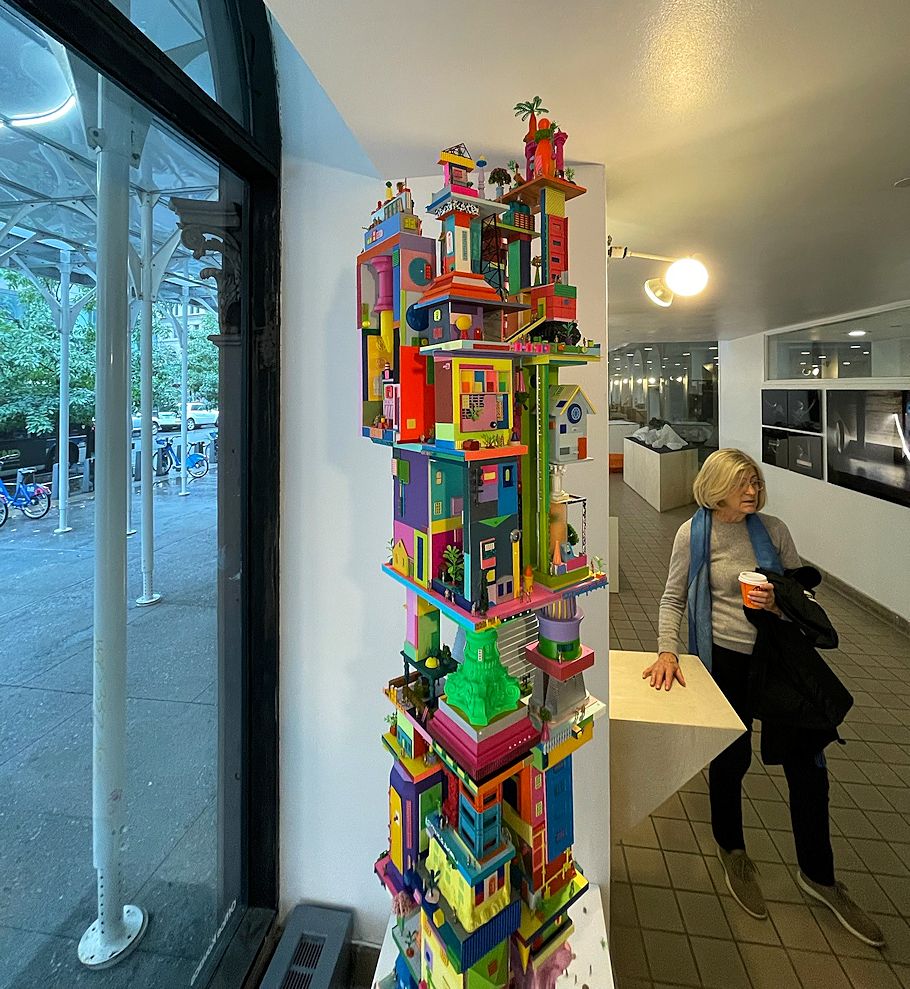
21:02 SL: Did you tell Cynthia Davidson that that work of yours is in The Discovery of Piranesi's Final Project?
7 October 2023 Saturday
2022.08.02 Sir Roger Newdigate
2023.04.22 email from Yura Plokhov
2023.04.23 Velimir Khlebnikov
2023.04.26 “an alternative picture of the world to the generally accepted one”
2023.04.30 a Soviet labor concentration camp in southern Ukraine 1945-1949; impunity
2023.05.03 Miers Fisher Jr./Andrei Iakovlevich Dashkov
2023.05.07 a drone in the sky
2023.05.13 Hohenwart
2023.05.15 readymade sculpture hyperbole
2023.05.16 beginning of Jupiter and Uranus in Taurus
2023.05.19 Hermitage; Putin; Coincidental Institute
2023.05.20 "...the hoax worked."
2023.06.11 Giovanni Lodovico Bianconi and "who is this "same mercenary"?"
2023.06.13 a chronology
2023.06.19 learned of Francesco having sued Bianconi (1779); learned that Bianconi mentions Piranesi's Circus of Caracalla work within the "Elogio storico"; "why hasn't anyone else already been writing about this Piranesi mystery?"
2023.06.23 transition from baroque to modern . . . transition from modern to "forever now."
2023.06.27 "Well, you certainly made that easy."
2023.07.01 "...read the entire text as if I'm watching a movie."
2023.07.06 Bianconi's Doctoring Piranesi
2023.07.12 "...my objective, rather, is to fix some histories."
2023.07.18 Hélène Gregoroffsky Fisher, a true unique among foremost Russian Americans.
2023.08.01 atonement
2023.08.10 Pierre-Adrien Pâris
|